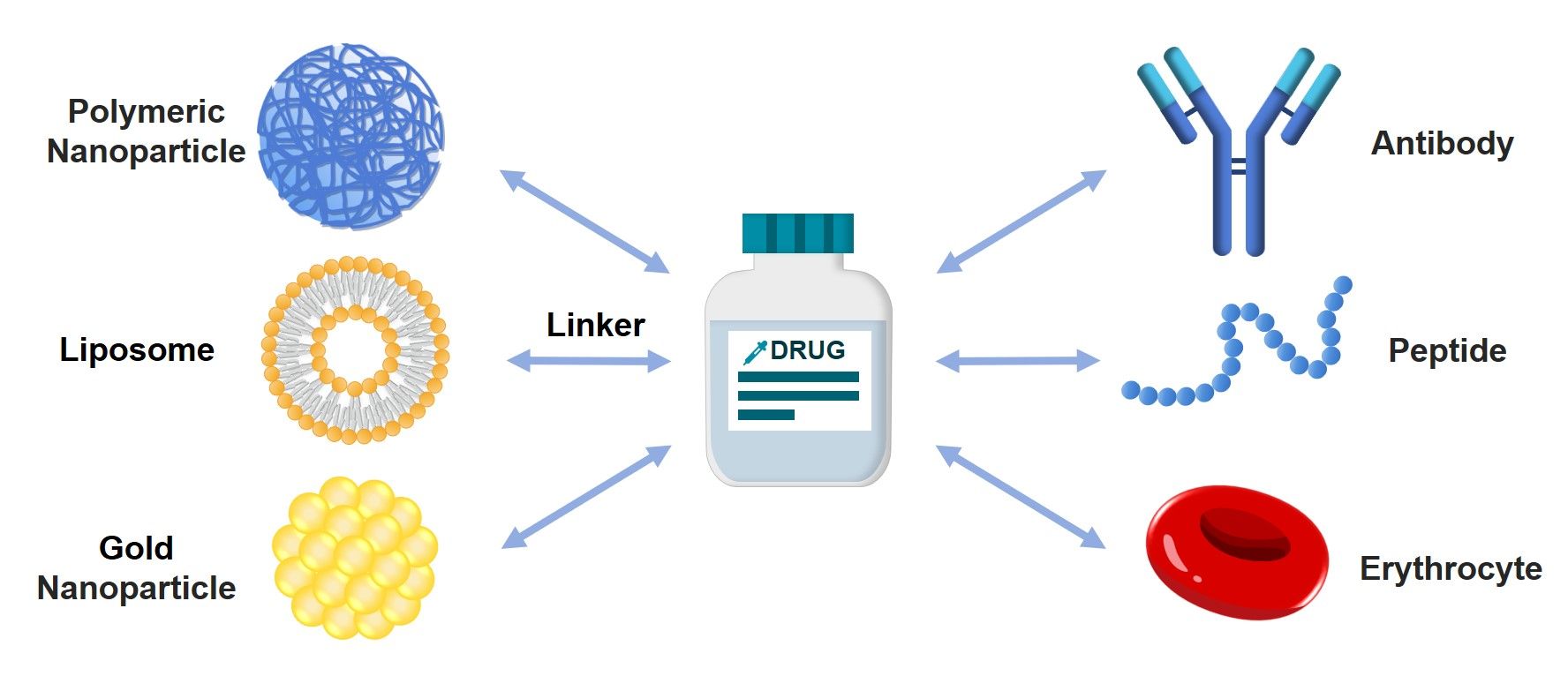Bioconjugation for Drug Delivery
Introduction of Drug Delivery System
Drug Delivery Systems (DDS) have emerged as a potential solution to the well-known shortcomings in drug management, particularly in the treatment of diseases such as cancer. DDS focuses on delivering drugs directly to the affected areas, thereby maximizing their effectiveness. In the design and development process of DDS, two main functions to consider are targeted delivery and controlled release. Exploring selective and effective DDS through new technologies of chemical conjugation is a mainstream direction.
 Fig. 1 DDS based on bioconjugation.
Fig. 1 DDS based on bioconjugation.
![]()
Proteins as Carriers in DDS
Animal derived proteins, mainly albumin and antibodies, play a significant role in DDS. Albumin is a safe biomaterial in clinical settings. It possesses desirable characteristics such as biocompatibility, stability, drug loading capacity, and the ability to target specific cells or tissues. While antibodies are highly specific in delivering conjugated drugs to their intended targets. Based on protein binding strategies, directly covalent conjugations involve binding the drug to the ε-amino group of lysine, the phenol group of tyrosine, or the SH-group on cysteine residues in the protein. Another successful coupling method is using crosslinking reagents, including homobifunctional crosslinkers and heterobifunctional crosslinkers.
![]()
Nanoparticles as Carriers in DDS
Nanoparticles (NPs) are generally less than 200 nm in size that offer advantages such as suitability for intravenous drug delivery, site specificity, high specific surface area to lower dosage delivery, and prolonged circulation. NPs can be categorized into inorganic NPs (gold NPs and silica NPs) and organic NPs (liposomes, micelles, and polymeric NPs). Conjugation of drugs to NPs usually occurs on their surfaces. Amine-carboxylate, thiol-thiol, thiol-maleimide, thiol-gold, and hydrazide-aldehyde are the most commonly used chemical reactions in the coupling of NPs, while the drug or ligand structure determines the type of reaction.
![]()
Erythrocytes as Carriers in DDS
Erythrocytes (red blood cells) are the most abundant cells in the blood. Their surface is covered with key protein markers that make erythrocytes biocompatible and non-immunogenic. This allows erythrocytes to circulate in the bloodstream for a long time and sustained release of drugs. Conjugation on the surface of erythrocytes is ideally suited for delivering drugs with coagulant properties, including ligands for fibronectin, heparin, and fibrinolytics. This strategy allows for achieving high drug concentrations at specific locations and effectively preventing blood clots. Streptavidin-biotin binding strategies are available to achieve this goal.
![]()
Hybrid Conjugates as Carriers in DDS
DDS typically use only one type of biomolecule or nanoparticle as a carrier, which can sometimes be inefficient. However, a new and promising approach is to develop a hybrid system that combines biomolecules with nanoparticles. This innovative solution can leverage the unique advantages of each component, enhancing the effectiveness of DDS in treating specific diseases, particularly cancer. Hybrid conjugation allows combinations between lipids, oligosaccharides, steroids and peptides. The formation of amide or disulfide bonds is a widely used chemical strategy for generating hybrid conjugates.
Conjugation Services for Custom DDS
With extensive experience, our scientists at Creative Biolabs has developed a series of crosslinkers and conjugation methods. What we offer including but not limited to, exceptional custom conjugation services for proteins, peptides, and nanoparticle carriers, aiming to develop a novel DDS for your needs. We adhere to the highest standards to deliver results that are both scientifically robust and commercially viable. Our team of experts is always ready to listen to your needs to address any challenges you may face. If you are interested in our services, please do not hesitate to contact us for detailed information.
